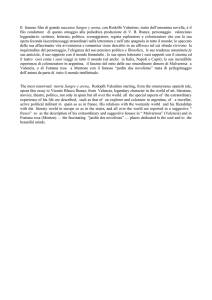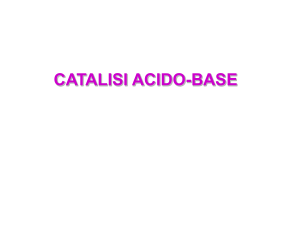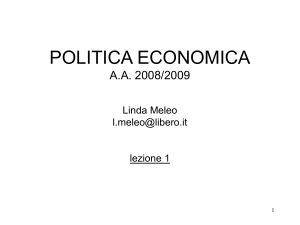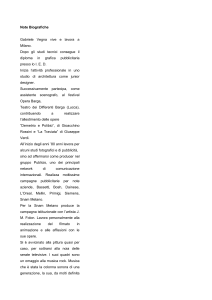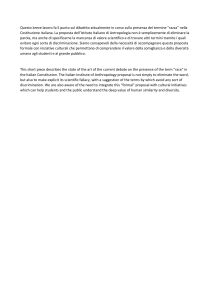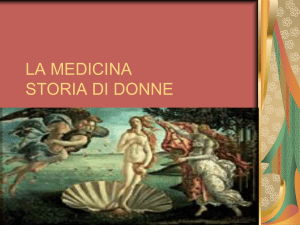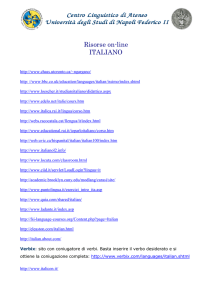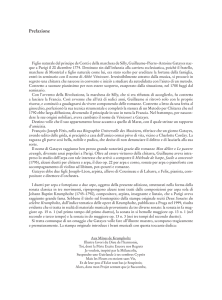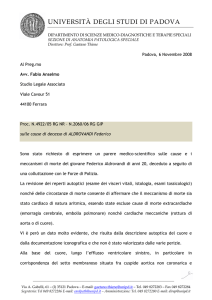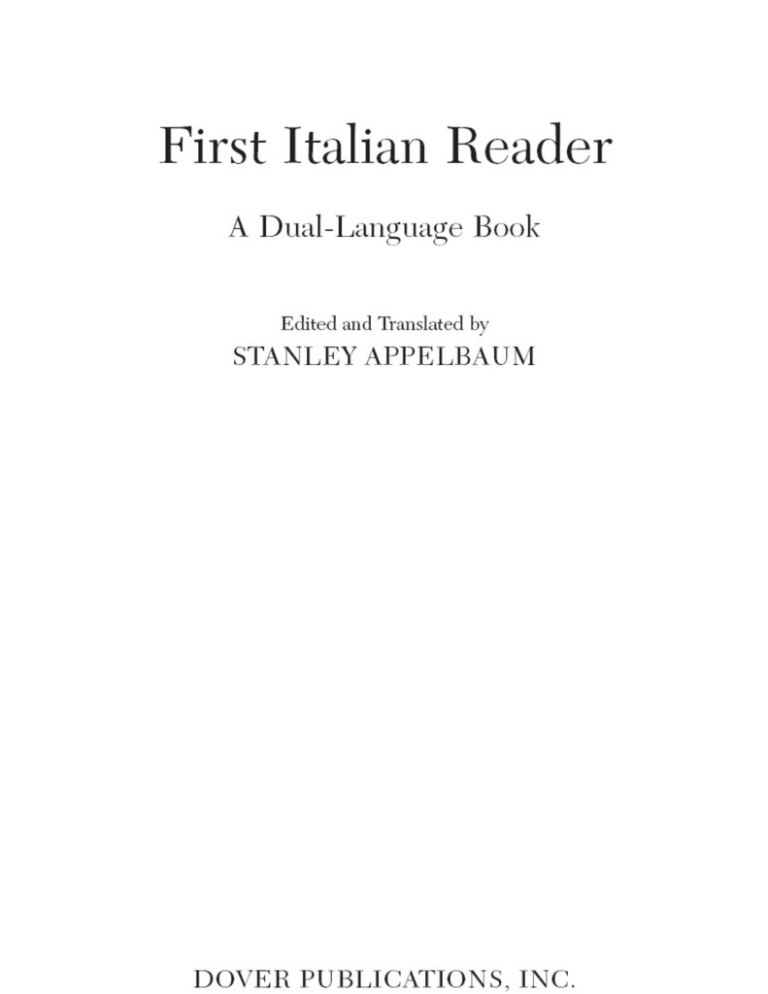
First Italian Reader
First Italian Reader
A Dual-Language Book
Edited and Translated by
STANLEY APPELBAUM
DOVER PUBLICATIONS, INC
Mineola, New York
Copyright
Selection, English translations, Preface, and Introduction copyright © 2008 by Dover Publications, Inc.
All rights reserved.
Bibliographical Note
This Dover edition, first published in 2008, is a new selection of excerpts from 55 Italian authors (reprinted from standard texts)
writing between ca. 1300 and ca. 1920 (the latest original publication date is 1921; see Introduction for data on individual authors),
together with new English translations by Stanley Appelbaum, who made the selection and wrote the Preface and Introduction.
Library of Congress Cataloging-in-Publication Data
First Italian reader : a dual-language book / edited and translated by Stanley Appelbaum.
p. cm.
Italian and English.
ISBN-13: 978-0-486-46535-7
ISBN-10: 0-486-46535-7
1. Italian language—Readers. 2. Italian language—Textbooks for foreign speakers—English. I. Appelbaum, Stanley.
PC1115.F57 2008
458.2′421—dc22
2007041872
Manufactured in the United States of America
Dover Publications, Inc., 31 East 2nd Street, Mineola, N.Y. 11501
PREFACE
This is not a book for children or for absolute beginners in Italian: the material is adult (though not in
the scabrous sense), and a good grounding in Italian grammar is needed for the fullest enjoyment of
the passages in the original. This is a “first reader” in the sense of an introductory anthology of the
whole span of Italian literature from ca. 1300 to ca. 1920. (Drama is excluded at the publisher’s
request, but a few major playwrights are represented by work in other genres.) The excerpts are totally
unadulterated, not “retold” or simplified pabulum. Self-contained, this book can be used with or
without an instructor. It should appeal to anyone interested in a rapid survey of a vital, energetic body
of writing, and one of the great cultural legacies.
The 55 authors (or works: two are anonymous) include a host of the greatest names in the field,
including many of world renown, and three Nobel laureates. The facing English translations, prepared
specially for this volume, are complete, and as faithful as the differences between Italian and English
allow; they obviate the use of reference books for unfamiliar words and grammatical forms, etc. The
average length of the authors’ contributions is about two pages (per language), but a few poets are
given only one-half to one-and-a-half pages, and two or three prose writers are allotted up to three
pages (Boccaccio!) to avoid truncating a good story or train of thought.
It would be impossible to compile for such literatures as English, German, and French (for instance)
an anthology like this which reaches back into the thirteenth century and can be readily understood;
Italian is fortunate in having remained fundamentally stable since then, except for relatively
superficial changes. (Of course, this anthology, which has sought to include only very lucid and selfexplanatory selections, has avoided the very rich literature in dialect; anyway, lucidity is often more a
feature of a given author’s style than of his date.) Nevertheless, some readers may wish to begin with
the eighteenth- or nineteenth-century material for greater familiarity.
Italian literature has often been highly influential on the rest of Europe (for instance, this reader
includes excerpts from three stories that inspired Shakespearean plays); from roughly 1300 to 1600 it
often led the way. The present volume is particularly strong on the glorious sixteenth century. It also
pays particular attention (in the area of prose) to the magnificent Italian storytelling tradition of the
late Middle Ages and Renaissance, and (in the area of verse) to the sonnet, which was a thirteenthcentury Italian invention.
The excerpts are chronological by authors’ years of birth (or, where these are unknown, by the
approximate date of the work). They include not only poetry and fiction, but also history, philosophy,
and other expository prose; the reader can sample the surprising writing ability of men renowned for
other talents, such as Michelangelo and Galileo. There is also much humor and fun, including the
world- famous Pinocchio. This book will be welcome to all who have wished for a taste of the original
wording of such writers as Dante, Manzoni, and Pirandello; of such works as the Decameron, The
Prince, and The Courtier.
To avoid further breaking up of the already choppy pages, no footnotes have been used; thus, it is
highly advisable to consult the numbered portions of the Introduction corresponding to the excerpts
being read. There is extremely little duplication of material already in previous Dover dual-language
books; and even in those few cases, the translations here are new. No attempt has been made to
regularize such permissible variations in accenting as ú/ù, í/ì, or -io/-ìo. The excerpts here follow the
source texts in each case (this is true of the orthography in general).
CONTENTS
Introduction
1. Novellino / Storybook (ca. 1300): 3 novelle / 3 stories
2. Dante (1265–1321): La divina commedia / The Divine Comedy
3. Petrarca (1304–1374): 5 sonetti / 5 sonnets
4. Boccaccio (1313–1375): Decameron
5. Sacchetti (ca. 1330–1400): Trecentonovelle / The Three Hundred Tales
6. I fioretti di San Francesco / The Little Flowers of Saint Francis (ca. 1390)
7. Ser Giovanni Fiorentino: Pecorone (ca. 1400)
8. Pulci (1432–1484): Morgante
9. Boiardo (1441–1494): Orlando innamorato / Orlando in Love
10. Lorenzo de’ Medici (1449–1492): 2 liriche / 2 lyric poems
11. Poliziano (1454–1494): 2 liriche / 2 lyric poems
12. Sannazaro (1455–1530): Arcadia
13. Machiavelli (1469–1527): Il principe / The Prince
14. Bembo (1470–1547): Gli Asolani / The Asolo Discourses
15. Ariosto (1474–1533): Orlando furioso / The Frenzy of Orlando
16. Michelangelo (1475–1564): 2 sonetti / 2 sonnets
17. Castiglione (1478–1529): Il cortegiano / The Courtier
18. Guicciardini (1483–1540): Storie fiorentine / Florentine Histories & Storia d’Italia / History of
Italy
19. Bandello (1484–1561): Novelle / Stories
20. Da Porto (1485–1529): “Istoria . . . di due nobili amanti” / “History . . . of Two Noble
Sweethearts”
21. Straparola (ca. 1490–ca. 1557): Le piacevoli notti / The Pleasant Nights
22. Cellini (1500–1571): La vita / Autobiography
23. Della Casa (1503–1556): Galateo
24. Cinzio (1504–1573): Hecatommiti / The Hundred Tales
25. Vasari (1511–1574): Le vite / The Lives
26. Stampa (ca. 1523–1554): 3 sonetti / 3 sonnets
27. Tasso (1544–1595): Gerusalemme liberata / Jerusalem Delivered
28. Bruno (1548–1600): De la causa, principio e uno / Cause, Principle, and Unity
29. Galileo (1564–1642): Il saggiatore / The Assayer
30. Campanella (1568–1639): La città del sole / The City of the Sun
31. Marino (1569–1625): L’Adone / Adonis
32. Vico (1668–1744): La Scienza nuova / The New Science
33. Metastasio (1698–1782): 2 sonetti / 2 sonnets
34. Gozzi (1713–1786): 2 sonetti / 2 sonnets
35. Parini (1729–1799): sonetto / sonnet
36. Alfieri (1749–1803): 3 sonetti / 3 sonnets
37. Monti (1754–1828): 2 sonetti / 2 sonnets
38. Foscolo (1778–1827): 5 sonetti / 5 sonnets
39. Manzoni (1785–1873): I promessi sposi / The Betrothed
40. Pellico (1789–1854): Le mie prigioni / My Prisons
41. Leopardi (1798–1837): 2 liriche / 2 lyric poems
42. De Sanctis (1817–1883): Storia della letteratura italiana / History of Italian Literature
43. Collodi (1826–1890): Le avventure di Pinocchio / The Adventures of Pinocchio
44. Nievo (1831–1861): Le confessioni di un italiano / The Confessions of an Italian
45. Carducci (1835–1907): 2 liriche e una prosa / 2 lyric poems and a prose passage
46. Verga (1840–1922): Mastro-don Gesualdo / Master Gesualdo
47. Boito (1842–1918): “L’alfier nero” / “The Black Chess Bishop”
48. Fogazzaro (1842–1911): Malombra
49. Pascoli (1855–1912): 3 liriche / 3 lyric poems
50. Svevo (1861–1928): Senilità / Old Age
51. D’Annunzio (1863–1938): L’Innocente / The Innocent One & versi / verse
52. Croce (1866–1952): Breviario di estetica / Breviary of Esthetics
53. Pirandello (1867–1936): Il fu Mattia Pascal / The Late Mattia Pascal
54. Deledda (1871–1936): Canne al vento / Reeds in the Wind
55. Saba (1883–1957): 4 liriche / 4 lyric poems
INTRODUCTION
Commentary on the Selections
1. Novellino. Anonymous; written between 1281 and 1300; first published 1525; the most important
Italian story collection before Boccaccio’s Decameron. This collection was dubbed Novellino by
Giovanni Della Casa (see No. 23); earlier it had been called Cento novelle antiche (A Hundred Old
Stories) or Libro del bel parlar gentile (Book of Comely Gentle Speech). Written by one or more
Florentines or northern Italians, it combined entertainment with social “wisdom.” Its stories are very
brief, and are derived from a variety of sources; our selection B is a variation of a tale included in
Petronius’s Satyricon; C is obviously from Aesop. All three tales reprinted here are complete, except
for their long, summarizing titles.
2. Dante Alighieri (1265–1321). Usually considered the greatest Italian author (he also wrote many
other verse and prose works in Italian and Latin), Dante, after turbulent civic activities, was in
permanent exile from his native city-state Florence when he composed his Commedia (called Divina
in a 1555 edition), probably beginning about 1306. “Midway through life” (that is, at 35, with
reference to the biblical life span of 70) he allegorically finds himself in a forest of moral confusion,
attacked by wild animals emblematic of his vices, until rescued by the voice of reason in the guise of
the great ancient Roman poet Vergil (our selection is the very opening of the Inferno, the first part of
the Commedia). The fame of Dante, Petrarca (No. 3), and Boccaccio (No. 4) led to the acceptance of
Tuscan as the chief literary dialect (see No. 14) and the basis of standard Italian.
3. Francesco Petrarca (1304–1374; often called Petrarch in English). A pioneer of humanism (the
revival of Greco-Roman culture), Petrarca wrote voluminously in Italian and Latin, but was most
lastingly influential as the perfecter of the sonnet (317 out of the 366 Italian lyric poems in his
Canzoniere [Songbook] are sonnets, outstanding for their virtuosity and sincerity; they were published
by 1554). The sonnets, five of which are reprinted here, idealize his love for the dead “Laura,” whom
he met in Avignon in 1327. The “vanity” referred to in selection A is his love for Laura; D was written
on Good Friday of 1338; in E, his “master” is Love. Petrarca has been called “Italy’s greatest lyric
stylist and poet.”
4. Giovanni Boccaccio (1313–1375). A humanist and friend of Petrarca, Boccaccio wrote many
Italian and Latin works, but is best known as “possibly the greatest storyteller of all time” in his
hundred-tale Decameron (Ten Days), written ca. 1349–1351. Our selection is the complete seventh
tale of Day Four (minus title). Fleeing the plague of 1348, several young Florentines assemble in a
rural villa and tell stories of all kinds (the risqué element has helped make the collection perennially
popular). The story included here is based on one of the bawdy French fabliaux (short narrative poems
of the twelfth and thirteenth centuries).
5. Franco Sacchetti (ca. 1330–1400). His Trecentonovelle (Three Hundred Tales; only 223 are
extant) was perhaps written between 1385 and 1392, but not published until 1724. The excerpt in this
volume is the beginning of his story 48, based on a universal folk motif of which a prime example
occurs in the Arabian Nights (Note that the podestà, or chief magistrate, of Florence was regularly
chosen from another city.) Sacchetti also wrote poetry and religious works in addition to this major
story collection, which affords a panorama of the society of his day.
6. I fioretti di San Francesco. This anonymous collection of legends concerning Saint Francis of
Assisi (ca. 1181–1226) was based on earlier accounts in Latin. One reference work gives the date of
writing as ca. 1370–1390; many others offer no dates. The language is deliciously simple, befitting the
delicate, tender subject matter. Our selection is the entire famous chapter devoted to the wolf of
Gubbio, typical of the saint’s special rapport with animals.
7. Ser Giovanni Fiorentino (Master John of Florence; no dates known). Though this author’s life
remains a mystery, his fifty-story collection Pecorone, written from 1378 to beyond 1400, makes him
one of the central figures in the development of the Italian tale after Boccaccio. Pecorone, literally
“ram,” is also slang for a coward or a fool; it has been rendered as Numbskull, and is said to refer to
the great number of foolish characters in the stories. Our selection is the beginning of the second
story, which later develops into one of the sources of Shakespeare’s Merchant of Venice, supplying the
“pound of flesh” theme and the appellation Belmonte. Tanais is the ancient name of Azov, at the
mouth of the Don in Russia.
8. Luigi Pulci (1432–1484). In Morgante, an epic poem in octaves (eight-line stanzas; ottava rima)
written between 1461 and 1483 (based on an anonymous fourteenth-century ballad) and first published
in its entirety in 1483, Pulci, a friend of the Medici family, whom he served as a diplomat, created the
first of the great Italian historical/fantastical epics of the Renaissance. In our selection, stanzas 19–27
of the first canto, Orlando (Charlemagne’s nephew Roland, hero of the Chanson de Roland) is just
leaving his uncle’s court in a fit of pique; he encounters the giant Morgante, who will be converted to
Christianity and will become his squire. (The memory of old wars against “Saracens” had been
aroused by the fall of Constantinople in 1453.)
9. Matteo Maria Boiardo (1441–1494). We give the very opening of his epic poem Orlando
innamorato (begun in the 1470s; Books I and II were published in 1483; Book III was left unfinished
at his death and published with the rest in 1495). Boiardo, a member of the Este court in Ferrara,
injected Arthurian-cycle romantic love into the martial tradition of epics about Charlemagne. Here,
Orlando falls in love with the Cathayan enchantress Angelica when she comes to his uncle’s court.
Turpin was the legendary author of earlier Roland epics; Durindana was Orlando’s sword; Baiardo was
Rinaldo’s steed.
10. Lorenzo de’ Medici, the Magnificent (1449–1492), became head of state in Florence in 1469.
An outstanding politician, cultural figure, and patron of the arts, he left behind a wide variety of
writings. Of the two complete poems reprinted here, A is a canzone a ballo (dance song); B, a canto
carnascialesco (Carnival-procession song); both were written before the dire 1478 conspiracy that
shattered the author’s merry frame of mind, but some critics find they are already nervous and
pessimistic even as they invite the listener to “seize the day.” (Trionfo may specifically designate the
processional float.)
11. Poliziano (Politian; 1454–1494; pseudonym, based on his Tuscan hometown Montepulciano, of
Angelo [Agnolo] Ambrogini). An eminent humanist, a protégé of Lorenzo the Magnificent, Poliziano
wrote a vast amount in Italian and Latin, but all of his Italian verse seems to have been written in the
decade 1470–1480. Of our two complete lyric poems, B is a canzone a ballo on the fleetingness of
beauty, while A is an excerpt from the Favola (or Festa) d’Orfeo (Play [or Festival] of Orpheus;
Mantua, 1480), a lyrical pastoral in dramatic form (a pioneering secular pageant with music, in which
classical mythology replaces the biblical subject matter of earlier religious works).
12. Jacopo Sannazaro (1455–1530). A Neapolitan who served the Aragonese court there, he wrote
varied works, some in Latin. We give one complete poem from Arcadia, written between 1480 and
1500 (definitive publication, 1504), a brief pastoral novel in prose and verse that was enormously
influential throughout Europe for some two hundred years (it has been called “the most successful
vernacular work of the Quattrocento”). Itself linking up with the classical bucolic tradition of
Theocritus and Vergil, it influenced such authors as Garcilaso, Montemayor, Lope, Cervantes, d’Urfé,
and Opitz, and, in England, Lodge and Sidney. It celebrates the sadness of love amid edenic
surroundings. In the reference to the sun having guarded flocks, the sun is identified with the myths
surrounding Apollo.
13. Niccolò Machiavelli (1469–1527). This Florentine statesman and widely traveled diplomat has
left us many political and historical works, in addition to the play La mandragora (The Mandrake). In
his first major work, his most famous, Il principe (written 1513, published 1532), of which we reprint
one full chapter, he proclaims Italy’s need for an absolute monarchy possessing sufficient territory to
have its own army with which to resist foreign invaders. His admiration for strongmen and his
relegation of conventional morality to a secondary, sometimes merely utilitarian, status led to his
acquiring a demonic reputation.
14. Pietro Bembo (1470–1547). This humanist, courtier, cardinal, and friend of Ariosto and
Castiglione, hailed Dante, Petrarca, and Boccaccio as the founders of the Italian literary language. His
own first major work, written between 1497 and 1505, and published in the latter year, was called Gli
Asolani (The Asolo Discourses) because it is set in Asolo (near Treviso in the Veneto), where Bembo
had visited the villa of Catarina Cornaro, queen of Cyprus, in 1495. Of the three speakers in the work,
the first is entirely in favor of human love; the second, entirely hostile to it. The third, Lavellino (from
whose discourse, representing the author’s views, our excerpt is taken), calls for a “Platonic” love, a
desire for heavenly things sparked only initially by human desire. The work (in the vernacular,
unusual for a philosophical opus at this time) was dedicated to Lucrezia Borgia, whom Bembo loved.
15. Ludovico Ariosto (1474–1533). In Orlando furioso, one of the several attempted continuations
of Boiardo’s unfinished Orlando innamorato (see No. 9), Ariosto, a courtier of the Estes in Ferrara
from 1503 (he addresses Ippolito d’Este), produced the greatest Italian epic poem, full of ironically
recounted adventures; our excerpt is the very opening. The writing probably began in 1504, and the
work was published in stages in 1516, 1521, and 1532. The poem has been called “the highest literary
achievement” of its day. Ariosto also wrote lyric verse, plays, and other works.
16. Michelangelo Buonarroti (1475–1564). The great sculptor, painter, and architect (see No. 25)
was also a significant poet, whose works were published posthumously as Rime (Rhymes) in 1623 by a
grand-nephew. Influenced by Dante, Petrarca, the Florentine circle around Lorenzo de’ Medici, and
the Roman noble poets of his own day, Michelangelo’s verse is nevertheless stubbornly original. We
give two sonnets.
17. Baldesar Castiglione (1478–1529). Il cortegiano, which has been termed the greatest of all
“courtesy books,” and which was widely imitated in Europe, was written between 1513 and 1518,
according to some; between 1508 and 1524, according to others; it was definitely published in 1528.
(From 1504 to 1513, the author attended the court of the city-state Urbino.) The book is in dialogue
form (extremely popular in the Renaissance), the speakers being Urbino courtiers. The subject matter
is the perfect courtier (male and female), ideal in every sense of the word. Was Castiglione describing
himself in the male role?
18. Francesco Guicciardini (1483–1540). Largely in retirement after the disastrous sack of Rome in
1527, this former politician, diplomat, and soldier, a friend of Machiavelli, devoted himself chiefly to
the writing of history. Our excerpt A is from his Storie fiorentine (written 1508 and 1509; left
incomplete; not published until 1859); the excerpt discusses the famous reformer Girolamo
Savonarola (1452–1498), who set up an austere theocracy in Florence. Excerpt B, from the Storia
d’Italia (written between 1535 and 1540, published in 1561 and 1564, it covers events from 1490 to
1534), concerns the discovery and exploitation of the New World. Guicciardini, the greatest historian
of the Italian Renaissance, is objective, balanced, and lucid, “a forerunner of modern methods of
research.”
19. Matteo Bandello (1484–1561). Courtier, diplomat, Dominican friar, bishop, poet, Bandello
continued Italy’s narrative traditions into the High Renaissance with his Novelle, the most important
sixteenth- century story collection. In four books, with a total of 214 tales (definitive publication,
1573), the Novelle, varied in themes and tone, supplied Shakespeare with the plots for Romeo and
Juliet (but see No. 20!), Twelfth Night, and Much Ado About Nothing. Our excerpt is the beginning of
story 4.
20. Luigi Da Porto (1485–1529). At the court of Urbino from 1503 to 1505, a soldier until 1511, this
friend of Bembo, historian and poet, is chiefly renowned for his “Istoria novellamente ritrovata di due
nobili amanti con la loro pietosa morte, intervenuta già nella città di Verona nel tempo del signor
Bartolomeo Dalla Scala” (“Newly Rediscovered History of Two Noble Sweethearts, with Their Pitiful
Death, Which Occurred in the Past in the City of Verona in the Time of Its Lord Bartolomeo Dalla
Scala [1301–1304]”). Written by 1524, it was published in 1531 and 1539. Based on material in the
1475 story collection Novellino by Masuccio Salernitano (ca. 1410–1475), where the locale is Siena,
the story was in turn the source for Bandello’s version.
21. Gian Francesco Straparola (ca. 1490–ca. 1557). One of the most celebrated Italian story
collections, Le piacevoli notti (often called The Nights of Straparola in English) was published in
1550 and 1553. Its 75 tales, told by ten women during thirteen nights in the presence of Bembo, are
largely folktales, including animal fables and stories derived from the Orient; one of them is the
earliest known version of what we know as “Puss in Boots.” In the story whose beginning we give
here, the envious neighbor does not get gold from the doll; Adamantina becomes queen after saving
the king from a particularly violent attack by the doll.
22. Benvenuto Cellini (1500–1571). The sculptor, goldsmith, medalist, and author of treatises on his
craft is most famous for the autobiography (reaching the year 1562) that he dictated between 1558 and
1566. With “consummate skill as a storyteller,” and in vigorous, spontaneous language, the boastful,
aggressive artist reveals himself openly. Our excerpt A recounts part of an incident typical of his
brawls and arrests; B refers to his work for French king François I at Fontainebleau between 1540 and
1545. The Vita wasn’t published until 1728.
23. Giovanni Della Casa (1503–1556) added a word to the Italian vocabulary with this book:
galateo is used to mean etiquette, or a book on etiquette (the increasingly refined Renaissance courts
gave more and more importance to “good manners”). The original of the character Galateo, who is
introduced in our excerpt, was Galeazzo Florimonte, bishop of Sessa Aurunca in the Campania region
of Italy. The humanist Della Casa, papal nuncio to Venice from 1544 to 1549, retired in that city from
1551 to 1555, and wrote the Galateo there; it was published in 1558.
24. Cinzio (pseudonym of Giambattista [or Giovan Battista] Giraldi, 1504–1573, often called
Cinthio in English), was a professor of philosophy and rhetoric, and wrote tragedies and literary
theory. The 113 stories in his Hecatommiti (published 1565) include the source of Shakespeare’s
Measure for Measure, as well as the source story for Othello, the opening of which is included here.
25. Giorgio Vasari (1511–1574). A painter and architect, and pupil of Michelangelo, whom he
idolized, Vasari is the author of Le vite de’ più eccellenti architetti, pittori, e scultori italiani (The
Lives of the Most Excellent Italian Architects, Painters, and Sculptors), 158 biographies from
Cimabue to Vasari himself. Written between 1542 and 1550, and published in 1550 and 1568, it is
considered as the founding work in the modern history of art. Excerpt A is from the Introduction;
Totila was an Ostrogoth king who came to Rome in 546. Excerpt B is from the life of Michelangelo
(see No. 16).
26. Gaspara Stampa (ca. 1523–1554). Sincere in a mannered era, Stampa, muse of a literary salon in
Venice, left us, in her works inspired by her love for a nobleman, “the foremost poetic production by
any woman of the Renaissance period.” Her Canzionere, its 300 or so poems mainly sonnets, was
published posthumously in 1554.
27. Torquato Tasso (1544–1595) wrote lyric poems, the verse play Aminta (Amyntas), and much
more, but his major work, written between 1559 and 1575, and published in 1581, was the last great
Italian epic poem, Gerusalemme liberata, based not on legends of Charlemagne, but on the historical
First Crusade (though it contains plenty of fantasy and fiction). In our excerpt, from Canto VII, the
heathen princess Erminia, wearing full armor, is fleeing the Crusaders when she finds herself in an
idyllic pastoral setting. (Unlike the rollicking earlier epics, Tasso’s is tinged by the more serious
Counter-Reformation and renewed Turkish aggressivity.) Mentally unstable from 1577 on, the poet
was kept in seclusion from 1579 to 1586.
28. Giordano Bruno (1548–1600). A heretic monk who wandered through Italy and many other
countries, Bruno was tried by the Roman Inquisition from 1592 on for his beliefs in the heliocentric
and atomic-materialistic theories, and in a world-soul; he was burned in 1600. The “last great
metaphysician of the Renaissance,” he wrote and published his Dialoghi at Oxford in 1584 and 1585.
In our excerpt from the fifth, titled De la causa, principio e uno, he waxes truly dithyrambic on the
subject of the oneness of the universe. Bruno also wrote Latin poems and an important Italian play.
29. Galileo Galilei (1564–1642). Outstanding in physics and astronomy, Galileo was also an
excellent writer, and not in scientific Latin, but in “the best prose tradition of the Florentine
Renaissance.” Il saggiatore (written from 1618 to 1621; published 1623; on the interpretation of
comets) has been named “a veritable masterpiece of polemics.”
30. Tommaso Campanella (1568–1639). A Dominican friar, Campanella was tried four times for
heresy, and spent much of his life in prison: from 1599 to 1626 in Naples for trying to set up an ideal
republic (like the one in La città del sole) in his native Calabria; from 1626 to 1629 in Rome. His
utopian magnum opus, the Città, was written from 1602 to 1611, and published in Germany in 1623. It
takes the form of a dialogue between a Knight Hospitaler and a Genoese seaman who had sailed with
Columbus. Features of the utopia are collective education and labor, and communal possession of
property and women. Campanella also wrote important verse.
31. Giambattista (or Giovan Battista) Marino (1569–1625). The most famous and influential Italian
poet of the seventeenth century, known for his delight in the senses and his mannered “conceits,”
Marino also wrote the longest Italian poem: the more than 40,000-line L’Adone, published 1623 in
Paris. A rambling retelling of the loves of Venus and Adonis (our excerpt is from the long description
of their pleasure garden), it displays a “dazzling technical mastery of rhetorical devices and phonic
value.”
32. Giambattista (or Giovanbattista) Vico (1668–1744), historian, jurist, philosopher, social
scientist, and autobiographer, is best remembered as a precursor of the philosophy of history in
Princìpi di una Scienza nuova d’intorno alla comune natura delle nazioni (Principles of a New
Science Concerning the Common Nature of Nations; published 1725, 1730, and 1744). This
comparative method for studying the rise and fall of nations, with its cyclical view of history, is
written in short aphoristic sections that begin with an “axiom” (degnità). Of our four excerpts, the first
three are complete sections, whereas the fourth begins partway into the discussion.
33. Pietro Metastasio (pseudonym of Pietro Trapassi, 1698–1782). Metastasio was the greatest
eighteenth-century opera librettist, beginning this activity in 1724. Some of his librettos were used
many times, even after Metastasio’s death, by different composers; Haydn and Mozart set Metastasio
texts. From 1729 Metastasio resided in Vienna, working for the Austrian court. The first of the two
sonnets reprinted here was written in 1733. In the second, Penthesilea was an Amazon queen living by
the river Thermodon in Asia Minor; the wife of Ninus was the Assyrian queen Semiramis.
34. Gasparo Gozzi (1713–1786) was a prominent figure in Enlightenment Italy. A journalist in
Venice (he edited the Gazzetta veneta and the Osservatore veneto), he was a satirist, a writer of
essays, stories, and verse. He was the elder brother of the vigorously imaginative playwright Carlo
Gozzi.
35. Giuseppe Parini (1729–1799). A notable Enlightenment poet and satirist, Parini is best known
for his four-part blank-verse poem Il giorno (The Day), about the frivolity and idleness of Milanese
high society. The sonnet reprinted here was found to be “picturesque” by Foscolo (see No. 38), who
included it in an 1816 historical study of the Italian sonnet.
36. Vittorio Alfieri (1749–1803). The greatest Italian writer of classical verse tragedy also wrote
some three hundred lyric poems in a Petrarchan vein, which were published in 1789 and 1804. Many
reflect his wide travels in almost a dozen countries from 1766 on. Of the three sonnets by which he is
represented here, A is dated January 13, 1778; B is dated August 9 and 10, 1784, in the South Tyrol
(Alto Adige); and C was first published in October of 1784. An ardent rebel against tyranny, Alfieri
was to influence the later Risorgimento.
37. Vincenzo Monti (1754–1828). Poet, dramatist, translator (especially of the Iliad), Monti was
very changeable in his politics: after being the protégé of churchmen, he openly favored democracy as
the official poet of Napoleonic Italy, only to become a placid neoclassicist under Austrian rule. The
first of the two sonnets reprinted here was read in 1784 before the famous Roman literary society
Arcadia. The second dates from 1822; the portrait painter was Filippo Agricola (1776–1857).
38. Ugo Foscolo (1778–1827). A major early Romantic poet, novelist, translator, and literary critic,
long a wanderer over the face of the earth (he died near London), Foscolo wrote twelve sonnets (not
counting juvenilia) said to be “among the most felicitous and moving of the romantic period.” They
were all included in his 1803 volume Poesie, though some had been published separately earlier. Of
the five reprinted here, A was perhaps written 1802 or 1803, published 1803; B was written between
1797 and 1802, published 1802 and 1803 (full of conscious literary reminiscences: its first two lines
are a paraphrase from the Latin poet Maximian of the sixth century; line 13, from Ovid); C was
probably written in 1801, published 1802 and 1803; D was written 1802 or 1803, published 1803
(Zacinto=Zakynthos=Zante, the island in the Ionian Sea where Foscolo was born); E was written 1802,
published 1803, revised 1816 (the poet’s brother killed himself in 1801, plagued by debts).
39. Alessandro Manzoni (1785–1873). His great historical novel I promessi sposi (inspired by Sir
Walter Scott; called “the highest achievement of Italian Romanticism”) was basically written between
1821 and 1823 and published in 1827, but was revised to make it more Tuscan, and definitively
published in 1842. It concerns Lombard peasants in the years 1628–1631, when Milan was under
Spanish domination. (This reflects the author’s lifelong desire for the freedom and unification of
Italy.) The young heroine puts her trust in a Capuchin monk named Cristoforo; our excerpt is part of
the story of how, while still the layman Lodovico, he became a monk after engaging in a street brawl.
Manzoni also wrote verse (especially religious verse), plays, history, philosophy, and criticism. It was
on the occasion of Manzoni’s death that Verdi composed his famous Requiem.
40. Silvio Pellico (1789–1854). A playwright and journalist, friend of Monti and Foscolo in Milan,
Pellico was an inmate of three Austrian prisons (in Milan, Venice, and Moravia) from 1820 to 1830
because of his connection with the revolutionary society known as the Carbonari. He recounted his
experiences lucidly and dispassionately in Le mie prigioni, published 1832, a widely read and
influential work that has been called a masterpiece of Romantic literature. His lack of rancor vexed
some of his revolutionary associates, but attracted other Europeans to the Italian cause. Our selection
is the entire first chapter and the beginning of the second.
41. Giacomo Leopardi (1798–1837) has been termed “the dominant figure of Italian lyric poetry of
all ages.” A nobleman, always sickly (perhaps from having long been shut in at home, studying too
hard), he is the poet of pessimism and unfulfilled hopes. Poem A (complete) was written in 1819;
Poem B (we give the first part only), in 1829 (“a magnificent lyrical compendium of the poet’s
affective life”). Leopardi’s poems, the Canti, were published in 1831, 1835, and 1845. He also wrote
important prose.
42. Francesco De Sanctis (1817–1883). A major critic and historian of literature, a professor of
Italian in Naples, De Sanctis was arrested in the revolution year 1848, and spent years of exile in Turin
and Zurich, returning to Naples in 1859; in the periods 1861–1862 and 1879–1881 he served as
Minister of Education. His Storia della letteratura italiana, written 1869–1871, made him “the
founder of modern literary criticism in Italy” and “gave Italy an organic and enduring system of
aesthetics.” Our excerpt is part of the discussion of Metastasio (see No. 33).
43. Carlo Collodi (pseudonym of Carlo Lorenzini, 1826–1890). Le avventure di Pinocchio: storia di
un burattino (The Adventures of Pinocchio: History of a Marionette) is beloved worldwide as the
foremost Italian children’s book. Collodi, a political journalist, novelist, and playwright who began to
write for children in 1875 (Pinocchio was serialized in a periodical in 1881 and published as a volume
in 1883), took his pseudonym from the Tuscan village where his mother was born. “Pinocchio” means
pine seed. This book, from which we give the entire first chapter and the opening of the second, has
been called “the masterwork of Tuscan literature after Galileo.”
44. Ippolito Nievo (1831–1861). Nievo, a member of Garibaldi’s famous 1859–1860 expedition of
“a thousand men,” was lost in a shipwreck when returning from Sicily. He had been a novelist, poet,
and story writer. Le confessioni di un italiano (known variously in English as The Confessions of an
Italian, The Confessions of an Octogenarian, and The Castle of Fratta) was written in 1857 and 1858,
and published in 1867. We give the very beginning, with its extremely famous first sentence.
Recounting the struggle for Italian unity and independence as reflected in a fictional autobiography, it
has been called “the novel of the most extraordinary vitality and freshness in nineteenth-century
Italy.”
45. Giosuè Carducci (1835–1907), the first Italian to win a Nobel Prize for literature (1906), also a
critic and a professor, was one of the three great poets of the late nineteenth century, along with
Pascoli and D’Annunzio. The first of the two complete poems reprinted here, addressed to the poet’s
dead son, was included in the section “Rime nuove (1861–1887)” of Carducci’s collected verse
(published 1901); the second, reflecting a vacation in the Val d’Aosta, in the section “Rime e ritmi”
[1890s]. The prose poem on the cicadas is from the volume Prose. Carducci was a republican in
politics, a noble, moral classicist in his writing.
46. Giovanni Verga (1840–1922), outstanding Sicilian novelist, story writer, and dramatist, known
for his earthy, headstrong characters, serialized Mastro-don Gesualdo in 1888 and brought it out in
volume form in 1889. The title figure is a social-climbing stonemason whose life is ruined after he
marries into the decaying nobility. The appellation “Mastro-don” combines the notions of artisan and
gentleman. This novel was the second of a planned cycle that was to have been called I vinti (The
Vanquished). Verga’s verismo was based on Flaubert’s Realism and Zola’s Naturalism.
47. Arrigo Boito (1842–1918) is best remembered for his extremely literate librettos for his own
operas and those of other composers (especially Verdi’s Otello and Falstaff), but he was also a writer
of poems and stories, a member of the Milanese decadent, antibourgeois liter ary movement of the
1860s known as scapigliatura (bohemianism). We give the opening of his story “L’alfier nero,”
published in a periodical in 1867. Gall is the German creator of phrenology Franz Joseph Gall (1758–
1828); Morant Bay is in Jamaica.
48. Antonio Fogazzaro (1842–1911). Malombra (this is the heroine’s family name, connoting “evil
shadows”) was his first novel, begun in 1872, published in 1881. Called “his most interesting” (the
very beginning is reprinted here), it’s a Gothic romance (unusual in Italy) about a secluded
noblewoman who believes she’s the reincarnation of an ancestress. Fogazzaro is perhaps best known
for his 1895 novel Piccolo mondo antico (Little World of the Past).
49. Giovanni Pascoli (1855–1912). A pupil of Carducci (No. 45), a poet, teacher, essayist, and critic,
the great stylist Pascoli usually struck an elegiac, pastoral chord. Some of his poems (not the three
reprinted here in their entirety) are notorious for their odd mixture of diction. He is said to have
“contributed more than any other poet of the time . . . to the renewal of Italian poetry in the twentieth
century.” All three of our poems are from the collection Myricae (Latin for “tamarisks,” emblems of
humble beauty in Vergil’s verse), various editions of which appeared between 1891 and 1903.
50. Italo Svevo (pseudonym of Ettore Schmitz, 1861–1928); the pseudonym (Italian Swabian) refers
to his mixed ancestry. He worked in a bank in his native Trieste from 1880 to 1899, when he went into
his brother-in-law’s business. After his meeting with James Joyce, ca. 1905, and the 1923 publication
of a new, acclaimed novel, his earlier, hitherto unnoticed novels were rediscovered and he enjoyed
literary fame until his death in a car accident. Senilità, begun in 1892 and published in 1898, has been
titled As a Man Grows Older in English, but this is misleading: the hero is thirty-five, and his “old
age,” or “senility,” reflects his inability to love and live fully, and his too ready acceptance of an
everyday existence. Our excerpt is the very beginning. The book has been called “the only Italian turnof-century modern love story.”
51. Gabriele D’Annunzio (1863–1938). Practically deified in the Mussolini era (after his work was
all but over, when he was living in seclusion), D’Annunzio had been a firebrand, not only in his
sensual verse and drama, but also as a soldier and adventurer with an extravagant life style (he ruled
the city of Fiume—now Rijeka in Croatia—for sixteen months after the First World War). Our
selections are part of a poem, from the 1893 volume Poema paradisiaco, and two passages from the
1892 novel L’innocente (sometimes called The Intruder in English). D’Annunzio also produced
journalism and film scenarios.
52. Benedetto Croce (1866–1952). Influenced by Vico (No. 32) and De Sanctis (No. 42), Croce
dominated Italian cultural thought in the first half of the twentieth century with his philosophical,
historical, critical, and political writings, and with his courageous anti-Fascist stance. Our excerpt is
the very beginning of his Breviario di estetica (published in 1913), the Italian-language original of
lectures he had been invited to write for the 1912 opening of the Rice Institute in Houston, Texas.
Used for high-school reading for decades in Italy, this book contains “some of Croce’s best pages.”
53. Luigi Pirandello (1867–1936). This world-famous playwright, known for his ironic paradoxes,
also wrote great stories and novels. His works reflect the fundamental relativity of human events and
the impossibility of real communication between people. It is said that he wrote his best-known novel,
Il fu Mattia Pascal (published 1904), to aid his family after his father’s Sicilian sulfur mines were
flooded. The hero, thought dead, thinks he can start a new life but is hampered because he now has no
juridical identity. Our excerpt is the second half of Chapter I and the first half of Chapter II.
Pirandello won the Nobel Prize for literature in 1934.
54. Grazia Deledda (1871–1936), the second Italian to become a Nobel laureate for literature
(1926), wrote novels, stories, and essays. Self-taught, she combines the verismo of Verga (No. 46)
with the symbolism and decadentism of D’Annunzio (No. 51) in her tales of sin, love, and death. In
Canne al vento (periodical and volume publication, both in 1913), a work of her full maturity with a
more complex plot than her earlier novels, she revels in her native Sardinian landscape and folklore as
the servant Efix strives to atone for the involuntary killing of his master, feeling responsible for the
ruin of the family (there are three surviving daughters). We give the very opening of the novel.
55. Umberto Saba (pseudonym of Umberto Poli, 1883–1957) was one of the major Italian poets of
the early twentieth century; he ran a second-hand bookstore in his native Trieste, where he was a
friend of Svevo (No. 50); he also wrote stories and other prose. Of the four poems reprinted here in
their entirety, the first two are from the collection Cose leggere e vaganti (Light, Wandering Things;
published 1920) and the other two are from the collection L’amorosa spina (The Loving Thorn;
published 1921). Saba is a lucid poet of honest self-analysis.
First Italian Reader
1. Novellino (ca 1300): 3 novelle
(A) Uno re fu nelle parti di Egitto, lo quale avea uno suo figliuolo primogenito, lo quale dovea portare
la corona del reame dopo lui. Questo suo padre dalla fantilitade sì cominciò e fecelo nodrire intra savi
uomini di tempo, sì che, anni avea quindici, giamai non avea veduto niuna fanciullezza. Un giorno
avenne che lo padre li comise una risposta ad ambasciadori di Grecia. Il giovane stando in su la
ringhiera per rispondere alli ambasciadori, il tempo era turbato, e piovea; volse li occhi per una
finestra del palagio, e vide altri giovani che accoglievano l’acqua piovana, e facevano pescaie e
mulina di paglia. Il giovane vedendo ciò, lasciò stare la ringhiera e gittossi subitamente giù per le
scale del palagio, e andò alli altri giovani che stavano a ricevere l’acqua piovana; e cominciò a fare le
mulina e le bambolitadi. Baroni e cavalieri lo seguirono assai, e rimenârlo al palazzo; chiusero la
finestra, e ’l giovane diede sufficiente risposta. Dopo il consiglio si partio la gente. Lo padre adunò
filosofi e maestri di grande scienzia; propuose il presente fatto. Alcuno de’ savi riputava movimento
d’omori, alcuno fievolezza d’animo; chi dicea infermità di celabro, chi dicea una e chi un’altra,
secondo le diversità di loro scienzie. Uno filosofo disse: «Ditemi come lo giovane è stato nodrito».
Fuli contato come nudrito era stato con savi e con uomini di tempo, lungi da ogni fanciullezza. Allora
lo savio rispuose: «Non vi maravigliate se la natura domanda ciò ch’ella ha perduto; ragionevole cosa
è bamboleggiare in giovinezza, e in vecchiezza pensare».
(B) Federigo imperadore fece impendere un giorno un grande gentile uomo per certo misfatto. E per
fare rilucere la giustizia, sì ’l faceva guardare ad un grande cavaliere con comandamento di gran pena,
che nol lasciasse spiccare. Sì che questi non guardando bene, lo ’mpiccato fu portato via. Sì che
quando quelli se n’avide, prese consiglio da se medesimo per paura di perdere la testa. E istando così
pensoso in quella notte, sì prese ad andare ad una badia ch’era ivi presso, per sapere se potesse trovare
alcuno corpo che fosse novellamente morto,
1. Storybook (ca. 1300): 3 stories
(A) There was a king in the area of Egypt who had a firstborn son that was to bear the crown of
the kingdom after him. Beginning with his childhood, this father of his had him raised among
wise, elderly men, so that when he was fifteen he had never known any childish ways. It came
about one day that his father entrusted him with a reply to ambassadors from Greece. As the
youth stood on a platform to reply to the ambassadors, the sky clouded over and it began to rain;
looking out through a palace window, he saw other youths welcoming the rainwater and damming
up pools and making straw mills. Seeing this, the youth left the platform, suddenly raced down
the palace stairs, and joined the other youths who were receiving the rainwater; and he began to
make mills and play games. Many barons and knights followed him and brought him back to the
palace; they shuttered the window, and the youth made the proper reply. After the council the
people departed. His father assembled philosophers and teachers of great wisdom, and expounded
that event to them. One of the sages thought the boy’s bodily humors were out of kilter; another,
that his mind had become weak; one said he was brainsick; they said this and that, depending on
their various store of knowledge. One philosopher said: “Tell me how the boy was brought up.”
He was told how he had been raised among sages and old men, far from any childish matters.
Then the sage replied: “Don’t be surprised that nature claims what it has lost; it’s a reasonable
thing to play games in youth and to be a thinker in old age.”
(B) One day the Emperor Frederick had a great nobleman hanged for a certain crime. And to
make his justice conspicuous, he had him guarded by a high-ranking knight, setting a severe
penalty if the body were taken down. This knight guarding the body inadequately, the hanged
man was carried away. When the knight became aware of this, he took counsel with himself in
fear of losing his head. Thinking and thinking all that night, he decided to go to a nearby abbey to
see if he could find some corpse recently dead, so that he could hang it on the gallows in place of
that other
acciò che ’l pottesse mettere alle forche in colui scambio. Giunto alla badia la notte medesima, sì vi
trovò una donna in pianto, scapigliata e scinta, forte lamentando; ed era molto sconsolata, e piangea
uno suo caro marito lo quale era morto lo giorno. El cavaliere la domandò dolcemente: «Madonna, che
modo è questo?». E la donna rispuose: «Io l’amava tanto, che mai non voglio essere più consolata, ma
in pianto voglio finire li miei dì». Allora il cavaliere le disse: «Madonna, che savere è questo? Volete
voi morire qui di dolore? Ché per pianto né per lagrime non si può recare a vita il corpo morto. Onde
che mattezza è quella che voi fate? Ma fate così: prendete me a marito, che non ho donna, e
campatemi la persona, perch’io ne sono in periglio, e non so là dov’io mi nasconda: che io per
comandamento del mio signore guardava un cavaliere impenduto per la gola; li uomini del suo
legnaggio il m’hanno tolto. Insegnatemi campare, che potete, e io sarò vostro marito, e terròvi
onorevolmente». Allora la donna, udendo questo, si innamorò di questo cavaliere e disse: «Io farò ciò
che tu mi comanderai, tant’è l’amore ch’io vi porto. Prendiamo questo mio marito, e traiallo fuori
della sepultura, e impicchiallo in luogo di quello che v’è tolto». E lasciò suo pianto; e atò trarre il
marito del sepulcro, e atollo impendere per la gola così morto. El cavaliere disse: «Madonna, elli avea
meno un dente della bocca, e ho paura che, se fosse rivenuto a rivedere, ch’io non avesse disinore». Ed
ella, udendo questo, li ruppe un dente di bocca; e s’altro vi fosse bisognato a quel fatto, sì l’avrebbe
fatto. Allora il cavaliere, vedendo quello ch’ella avea fatto di suo marito, disse: «Madonna, siccome
poco v’è caluto di costui che tanto mostravate d’amarlo, così vi carebbe vie meno di me». Allora si
partì da lei e andossi per li fatti suoi, ed ella rimase con grande vergogna.
(C) La volpe andando per un bosco, si trovò un mulo, che mai non n’avea più veduti. Ebbe gran paura,
e fuggì; e così fuggendo trovò il lupo. E disse come avea trovata una novissima bestia, e non sapeva
suo nome. Il lupo disse: «Andianvi». Furono giunti a lui; al lupo parve via più nuova. La volpe il
domandò di suo nome. Il mulo rispuose: «Certo io non l’ho ben a mente; ma se tu sai leggere, io l’ho
scritto nel piè diritto di dietro». La volpe rispuose: «Lassa! ch’io non so leggere: che molto lo saprei
voluntieri». Rispuose il lupo: «Lascia fare a me, che molto lo so ben fare». Il mulo sì li mostrò il
piede dritto, sì che li chiovi pareano lettere. Disse il lupo: «Io non le veggio bene». Rispuose il mulo:
«Fatti più presso, però che sono minute». Il lupo si fece sotto, e guardava fiso. Il mulo trasse, e dielli
un calcio tale che
one. Reaching the abbey that same night, he found there a woman in mourning, her hair
disheveled, her clothes in disarray, lamenting loudly; quite disconsolate, she was weeping for her
dear husband, who had died that day. The knight asked her gently: “Madam, why are you carrying
on so?” And the lady replied: “I loved him so much that I never want to be consoled anymore; I
want to end my days in weeping.” Then the knight said to her: “Madam, is this wise? Do you
wish to die of grief here? Because neither lamenting nor tears can bring a dead man back to life.
And so, what is this folly you are committing? Rather, do this: take me for a husband, for I have
no wife, and save my life because it’s in danger and I don’t know where to hide: because by my
master’s orders I was guarding a knight who had been hanged by the neck, and men of his family
have taken him from me. Show me how to stay alive, for you can do it, and I shall be your
husband and shall keep you honorably.” Hearing this, the woman then fell in love with this knight
and said: “I’ll do whatever you order me to, so great is the love I bear toward you. Let us take this
husband of mine, let us draw him out of his grave, and let us hang him in place of the man taken
away from you.” And she left off her weeping, and helped draw her husband out of the grave, and
helped hang him by the neck, dead as he was. The knight said: “Madam, the other man was
missing a tooth from his mouth, and I fear being dishonored if the body were inspected again.”
Hearing this, she broke a tooth out of the dead man’s mouth; and if anything else had been
necessary in that matter, she would have done it. Then the knight, seeing what she had done to her
husband, said: “Madam, just as you have cared so little about the man you gave signs of loving so
much, so you would care even less about me.” Then he left her and returned to his business, while
she was left there covered with shame.
(C) The fox, walking through the woods, found a mule; she had never seen one before. She was
very frightened and ran away; as she ran, she met the wolf. She told him she had come across a
very strange animal, and didn’t know its name. The wolf said: “Let’s go there.” They came up
with him; the wolf found it even odder. The fox asked it its name. The mule replied: “I can’t
exactly recall it, but if you know how to read, I have it written on my right hind foot.” The fox
replied: “Alas, I don’t know how to read, and I’d be very glad to learn this.” The wolf replied:
“Leave it to me, because I know how to read very well.” The mule showed him its right foot, on
which the horseshoe nails looked like letters. The wolf said: “I don’t see them very well.” The
mule replied: “Come closer, because they’re tiny.” The wolf placed himself below and looked
hard. The mule
l’uccise. Allora la volpe se n’andò, e disse: «Ogni uomo che sa lettera, non è savio».
2. Dante (1265–1321): La divina commedia
Nel mezzo del cammin di nostra vita
mi ritrovai per una selva oscura,
ché la diritta via era smarrita.
Ahi quanto a dir qual era è cosa dura,
esta selva selvaggia e aspra e forte
che nel pensier rinova la paura!
Tant’è amara che poco è più morte;
ma per trattar del ben ch’i’ vi trovai,
dirò de l’altre cose ch’i’ v’ho scorte.
Io non so ben ridir com’i’ v’entrai:
tant’era pien di sonno a quel punto
che la verace via abbandonai.
Ma poi ch’i’ fui al piè d’un colle giunto,
là dove terminava quella valle,
che m’avea di paura il cor compunto,
guardai in alto, e vidi le sue spalle
vestite già de’ raggi del pianeta
che mena dritto altrui per ogne calle.
Allor fu la paura un poco queta,
che nel lago del cor m’era durata
la notte ch’i’ passai con tanta pieta.
E come quei che con lena affannata,
uscito fuor del pelago a la riva,
si volge a l’acqua perigliosa e guata,
così l’animo mio, ch’ancor fuggiva,
si volse a retro a rimirar lo passo
che non lasciò già mai persona viva.
Poi ch’èi posato un poco il corpo lasso,
ripresi via per la piaggia diserta,
sì che ’l piè fermo sempre era ’l più basso.
Ed ecco, quasi al cominciar de l’erta,
una lonza leggera e presta molto,
che di pel macolato era coverta;
e non mi si partia dinanzi al volto,
anzi ’mpediva tanto il mio cammino,
recoiled and gave him such a hard kick that it killed him. Then the fox departed, saying: “Not
every man who knows his letters is wise.”
2. Dante (1265–1321): The Divine Comedy
Halfway through our allotted span of life
I found myself in a dark forest,
for I had strayed from the straight-and-narrow path.
Ah! What a hard thing it is to tell what it was like,
that wild, rough, dense forest,
the very thought of which renews my fear!
It’s so bitter that death is not much more so;
but to discuss the benefit I found there,
I shall tell of the other things I observed in it.
I can’t readily recall how I entered it:
I was so full of slumber at the moment
when I deserted the true way.
But after I had reached the foot of a hill
which was the termination of that valley
which had afflicted my heart with fear,
I looked upward and saw its sides
already clad in the beams from that planet
which guides men straight, whatever their road.
Then my fear was somewhat calmed,
that fear which had remained in the lake of my heart
all that night I spent in such a pitiful state.
And like a man who, with panting breath,
having emerged from the sea onto the shore,
turns back to the perilous waters and stares at them,
thus my thoughts, which were still in flight,
turned back to gaze again at the passage
that had never admitted a living person.
After I had rested my weary body a while,
I resumed my journey up the deserted slope,
so that the foot that supported me was always the lower one.
And behold, almost at the outset of the ascent:
a very slender and swift leopard,
covered with spotted skin,
which wouldn’t depart from its place before my eyes,
but hindered my ascent so much
ch’i’ fui per ritornar più volte vòlto.
Temp’era dal principio del mattino,
e ’l sol montava ’n sù con quelle stelle
ch’eran con lui quando l’amor divino
mosse di prima quelle cose belle;
sì ch’a bene sperar m’era cagione
di quella fera a la gaetta pelle
l’ora del tempo e la dolce stagione;
ma non sì che paura non mi desse
la vista che m’apparve d’un leone.
Questi parea che contra me venisse
con la test’alta e con rabbiosa fame,
sì che parea che l’aere ne tremesse.
Ed una lupa, che di tutte brame
sembiava carca ne la sua magrezza,
e molte genti fé già viver grame,
questa mi porse tanto di gravezza
con la paura ch’uscia di sua vista,
ch’io perdei la speranza de l’altezza.
E qual è quei che volentieri acquista,
e giugne ’l tempo che perder lo face,
che ’n tutti suoi pensier piange e s’attrista;
tal mi fece la bestia sanza pace,
che, venendomi ’ncontro, a poco a poco
mi ripigneva là dove ’l sol tace.
Mentre ch’i’ rovinava in basso loco,
dinanzi a li occhi mi si fu offerto
chi per lungo silenzio parea fioco.
Quando vidi costui nel gran diserto,
«Miserere di me», gridai a lui,
«qual che tu sii od ombra od omo certo!»
Rispuosemi: «Non omo, omo già fui,
e li parenti miei furon lombardi,
mantoani per patrïa ambedui.
Nacqui sub Julio, ancor che fosse tardi,
e vissi a Roma sotto ’l buono Augusto
al tempo de li dei falsi e bugiardi.
Poeta fui, e cantai di quel giusto
figliuol d’Anchise che venne di Troia,
poi che ’l superbo Ilïòn fu combusto.
Ma tu perché ritorni a tanta noia?
that I turned to go back several times.
It was early in the morning
and the sun was rising in that constellation
it had been in when divine love
first set those lovely things in motion;
so that I was given cause for hope
of protection from that beast with the variegated hide
by the hour of the day and the sweet spring season;
but not so much so that I failed to be frightened
by the sudden appearance of a lion.
It seemed to be coming toward me
with head held high and a ravenous hunger,
so that the air seemed to tremble at it.
And a she-wolf, which seemed to be laden
with all longings, skinny as it was,
and which has already made many nations live in sadness,
instilled such great oppression in me
through the fear that emanated from the sight of it
that I lost all hope of reaching the summit.
And like a man who loves to acquire wealth
and, when the time comes that makes him lose it,
weeps and is saddened in all his thoughts,
thus I felt when faced by that insatiable beast,
which, coming toward me, was gradually
driving me back to the place where the sunshine can’t enter.
While I was plunging back to the plain,
there was presented to my eyes
one who seemed to have a faint voice because of long silence.
When I saw him in the great wilderness,
I shouted to him: “Take pity on me,
whoever you are, whether ghost or living man!”
He replied: “I’m not living, though I once was,
and my parents were Lombards,
both natives of Mantua.
I was born at the time of Julius Caesar, though late in his life,
and I lived in Rome under good Augustus
in the days of the false, lying gods.
I was a poet, and I sang of that just
son of Anchises who came from Troy
after proud Ilium was burned.
But why are you returning to such distress?

